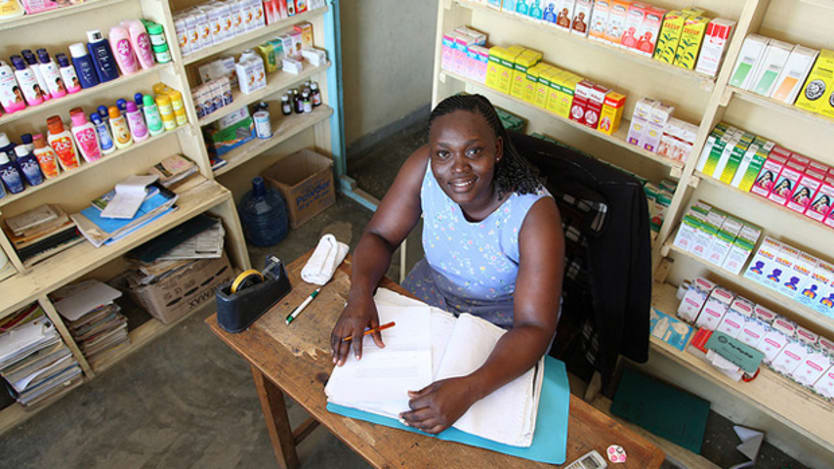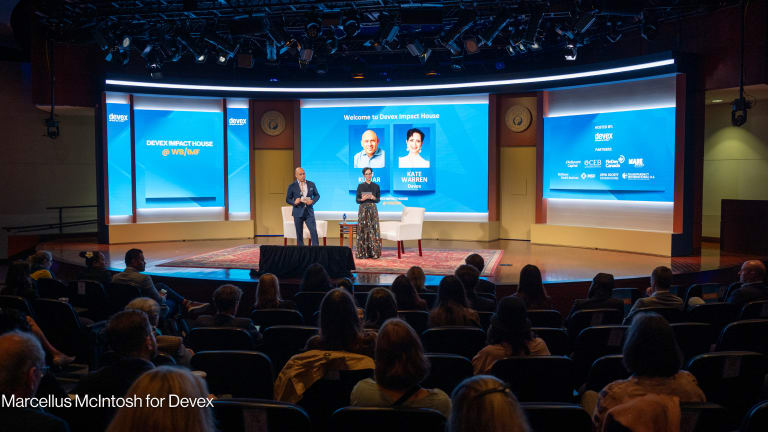
What does a social business do when they don’t have a rich uncle to help them go from microenterprise to a small- or medium-sized enterprises?
The answer may be crowdfunding.
Much has been made of the “missing middle” — the lack of SMEs in most developing countries — and one key, often bemoaned obstacle is a lack of financing. While still in the early stages, some organizations have turned to crowdfunding for low-cost, risk-tolerant capital to help the entrepreneurs they serve bridge the gap between microfinance and commercial lending.
Kiva, a crowdfunding nonprofit that aims to alleviate poverty through lending, already recognized a few years ago the need to fund these social enterprises and recently decided to expand its portfolio. It was a shift for the organization, which up to this point had focused on crowdfunding microfinance loans, but one that has so far proven mostly successful, and according to funding partners, has helped leverage additional funds for social enterprises.
“In my personal opinion this is a space that is potentially larger than microfinance,” Carlos Pierre, Kiva’s manager of strategic initiatives, told Devex. “There is a massive need for financing for small companies.”
The demand
Many social enterprises struggle to find working capital and growth funding, as commercial banks and traditional funding sources are often unwilling to take on the risk of lending to them.
In some cases, that leaves a business with an order for 200,000 items it cannot produce because it lacks the money to purchase the supplies and pay for the shipping. It’s a story of continual missed opportunities for growth — of both jobs and economies.
SME growth is critical to economic development, to the point that they create most of the jobs in industrialized economies.
“This is the space where we think there is a massive need,” explained Pierre. “It’s a great way to help social enterprises build a track record to approach larger institutional investors.”
Kiva social enterprise loans are not made directly to the entrepreneur — regulatory hurdles prevent that strategy — but rather go through partner organizations like SME aggregators or impact investors, he said. Those partnerships also make it easier to complete the due diligence process, as well as handle dispersal and collection of the loan money.
One of those partners is Investisseurs & Partenaires, an impact investment group dedicated to supporting African SMEs with capital, mentoring and technical assistance. Earlier this year, the firm crowdfunded its first $15,000 loan to allow an entrepreneur to develop and implement a solar-powered engine to help deliver clean tap water in Mauritania. The loan was funded within 24 hours and the solar engine is already up and running.
“This would not have been possible with commercial funding because it would have been too expensive,” said David Munnich, head of new development strategy at I&P.
The key to what Kiva — and crowdfunding more generally — provides that other groups like governments and traditional funding cannot is risk tolerant capital, said Christina Riechers, director, of business development and strategy at Evidence Action, which started working with Kiva in 2013 to fund loans for entrepreneurs under its Dispensers for Safe Water program, which makes chlorine dispensers available to more people and sells the carbon credits they create to earn revenue.
“Kiva can de-risk new financing models for proven development innovations,” she said, adding that it can and has helped Evidence Action secure funding from other donors. The Kiva loan was the tipping point for a foundation which later signed off on a $2 million loan modeled after the first one to further support the program.
When does crowdfunding work?
Crowdfunding can be a useful tool, but it’s likely going to be most effective for certain types of projects.
Projects that can be easily explained and therefore can attract broad appeal from a wide audience will probably succeed. On the other hand, the more complicated the business or project is, the less attractive it becomes. The projects most likely to get funding have a more sexy, appealing story to tell, Munnich said.
A successful loan, Riechers pointed out, will also have a people element to it.
Choosing the right project, in the right country and creating compelling marketing materials are also important, said Teddy Sun, partnerships manager at Yunus Social Business, which helps to create social businesses by setting up incubator funds and channelling financing from development agencies, foundations, NGOs and individual donors to social businesses.
“It depends on the platform and the type of audience that funds the platform and it depends on the motivations of the campaign and if it aligns with the people providing capital,” she said.
A few months ago, YSB crowdfunded $100,000 — Kiva’s largest loan to date — to support Kreyol Essence, a social enterprise in rural Haiti.
Crowdfunding is also a good option when a business or partner organization wants to build awareness and advocacy, Munnich said. In I&P’s case, it helps make the case for good, investable entrepreneurs in Africa.
Bumps in the road
Crowdfunding also has some drawbacks and there’s still room for improvement on how it can best be used as an effective piece of development finance.
First, there is often a due diligence process — at least with crowdfunders like Kiva — which ultimately helps the organization but also takes time. A company should carefully evaluate the marketplace or platform and make sure it has enough reach to defray the upfront costs, especially for small companies where the burden would be greater, Riechers said.
An organization also has to learn about the loan cycles and how to best market a project, according to Sun. YSB’s first and third loans were funded quickly, but the second loan didn’t get as much traction. Through that experience, they learned that they needed to time the release of the new loans with Kiva’s repayment cycle, when there is more traffic on the site.
It is important also, she said, to plan for uncertainty. A loan launch may be delayed due to low demand and other market conditions, which can make for an unpredictable time frame.
“Crowdfunding itself is a very uncertain source of capital,” Sun explained. “You really need to figure out how to finance businesses irrespective of how crowdfunding will happen.”
Given some of these challenges, it’s critical to communicate with the entrepreneur or business that is being funded and manage expectations.
Evolution
There is still quite a bit of testing and experimentation to be done, and perhaps establish a set of criteria to help steer the right projects toward crowdfunding, but it’s clear that early examples of success are starting to build momentum.
Kiva will continue to experiment and adapt the model, Pierre said. The success of other crowdfunding platforms which have raised multi-million dollar loans such as Kickstarter and Indiegogo give him hope that there is the potential for growth. While Kiva isn’t likely to fund loans over $1 million — because that exceeds what an SME would need and could potentially be provided by commercial lenders — the organization will continue to expand this line of business.
“We hope to accelerate that process,” Pierre said, calling out to to firms working with SMEs and encouraging them to consider partnering with Kiva. Meanwhile, I&P, YSB and Evidence Action all said they plan to continue to explore crowdfunding projects.
“We want to continue to have a diverse portfolio of funding,” Riechers noted. “If crowdfunding can be a piece and help de-risk our program and finance our program … then that’s a great option for us.”
YSB is looking to expand its credit limit on Kiva so it can build on past successes, which have given the company the confidence to finance more social businesses through crowdfunding, Sun said, adding that “there’s huge potential for crowdfunding for development finance because of the technology we are now really able to channel money to people” who need it whereas in the past it had to go through NGOs or development banks.
Join Devex, the largest online community for international development, to network with peers, discover talent and forge new partnerships — it’s free. Then sign up for the Devex Impact newsletter to receive cutting-edge news and analysis every month on the intersection of business and development.








